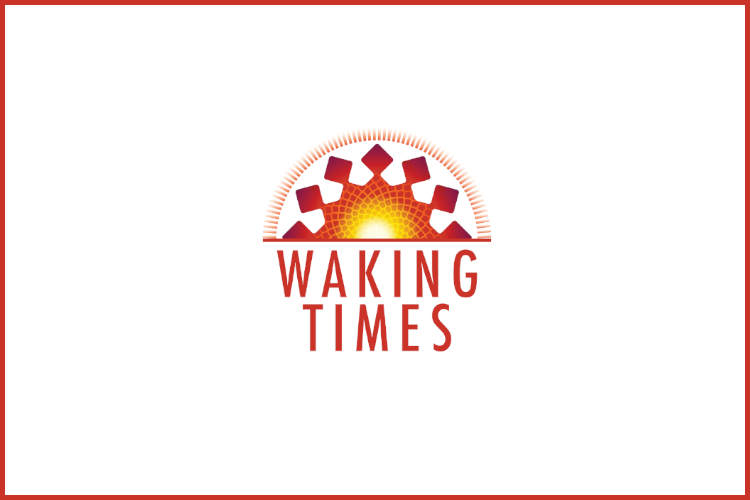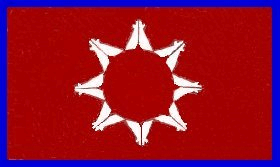The Ghost Dance
 •
by
•
by Silas Soule

Dear readers,
The following provides a few reference points to what a great warrior spirit might mean.
What does this have to do with eRep?
Hmmm... I've touched on this topic in previous articles. Hence my interest in taking a look at a few possible models. I'll just leave it there. Maybe you can figure it out. Or maybe it doesn't make any sense.
At any rate, maybe you'll enjoy this read anyway..
The Great Warrior Spirit

Chief Crazy Horse
Tȟašúŋke Witkó the 3rd was a 19th century war leader of the Oglala Lakota nation. He was most famous for his role in the Battle of the Greasy Grass on June 25-26, 1876 near the Little Bighorn River in what is now called Montana. The combined forces of the Arapaho, Lakota and Northern Cheyenne armed forces, led by Tȟašúŋke Witkó ("His-horse-is-crazy") and inspired by the visions of Tȟatȟáŋka Íyotake, overwhelmingly defeated the U.S. 7th Cavalry, annihilating five of their companies.

The animal protector of Crazy Horse was the white owl and his sacred song is still sung by the Oglala people today.
Black Elk described the vision quest of Crazy Horse in his well-known memoir:
"Crazy Horse dreamed and went into the world where there is nothing but the spirits of all things. That is the real world that is behind this one, and everything we see here is something like a shadow from that world."
He saw his spirt-horse dancing and that's how he got his name. The vision gave him great power. When he was fighting, he only had to think of that spirit world to be in it again, so that he could go through anything and not be hurt. Indeed, Crazy Horse only suffered two minor injuries throughout his many battles, including the "Great Sioux War" of 1876-1877.
While the Húŋkpapȟa Lakota military leaders, especially Chief Phizí ("Gall"), are credited with providing the main strategic and tactical leadership for the great battle, Crazy Horse is remembered as the greatest fighter in the battle.
And his spirit, animated by an extraordinary vision of fearlessness, remains an inspiration to many.

Model of the Crazy Horse monument (in progress in background) in South Dakota
The Sun Dance

A year before the Battle of the Greasy Grass, Tȟatȟáŋka Íyotake ("Sitting Bull", also called Slon-he or "Slow"), a leading fighter in the Dakota War of 1862 and in Red Cloud's War (1865-186
😎, as well as a notable Lakota spiritual leader, had created the Sun Dance alliance between the Lakota and Cheyenne.
The Sun Dance was a religious ceremony to celebrate the spiritual rebirth of its participants. In early June, 1876 at Sun Dance ceremony near the Rosebud River in Montana, Sitting Bull had a vision of "soldiers falling into his camp like grasshoppers from the sky." It turned out to be prescient.

The Sun Dance shows that there is no true end to life, but a cycle of symbolic and true deaths and rebirths. All of nature is intertwined and interdependent. The buffalo makes up the main theme of the Sun Dance. It was the buffalo that began the ritual. Plains Indians relied on buffalo for their food, clothing, shelter, and most all utensils from fly swatters to children's toys. The slaughter of these great beasts that once roamed the Plains in great number remains a tragedy of untold proportions.
The U.S. launched a military campaign that summer of 1876 to force the Lakota and Cheyenne back to their reservations, using infantry and cavalry in a three-pronged assault on their stronghold near the Little Bighorn. Brig. Gen. George Crook's column had been delayed a week earlier at the Battle of the Rosebud, when he'd been surprised by a large Native force that had forced him to retreat.
Unaware of Crook's delay, the other columns had proceeded towards the Bighorn.
About 20% of the 7th Cavalry troops were poorly-trained, many of those malnourished immigrants from Ireland, Germany and England. A good number of the veterans, on the other hand, had been in the field for years, some in the Civil War and many on constabulatory duty in the Deep South. Some analysts believe they may have been worn down and weary. The 7th also suffered from a short-staffed officer corps.
But the main problem the 7th had was underestimating their opponents, that is, having faulty intelligence on the strength of the opposing forces.
Rather than the 800 or so combatants they expected, they faced a force of several thousand warriors, including thousands of "reservation Indians" who had left the Rez to join Sitting Bull's "uncooperative" religious movement.
The first foray against the combined resistance encampment was led by Major Marcus Reno. Mistakenly thinking he was attacking a small collection of teepees -- where his men shot several women and children -- Major Reno had actually stumbled into a large group of Húŋkpapȟa Lakota, which was Sitting Bull's tribe. As the mounted warriors began streaming out to meet the attack, Reno realized he was actually out-numbered five-to-one.

Reinforcements arrived and a pitched battle ensued around the position Reno had established. While he failed to win the day, those battallions held their ground throughout the fighting.
Meanwhile forces led by Gen. George Custer had engaged -- some say unwisely, or perhaps mistakenly -- with a combined Lakota and Cheyenne army about 3 1/2 miles to the north. All 200+ men under his command, including Custer himself, were slaughtered. Cheyenne oral tradition credits Buffalo Calf Road Woman with striking the blow that knocked Custer off his horse before he died. Many Indian accounts of the battle say that Custer's men fought with outstanding bravery and report that scores more insurgents were killed around Last Stand Hill than were cavalrymen, a testimony to Custer's fortitude against overwheling odds.
Despite the great victory at Little Big Horn, it was the beginning of the end of large-scale armed Native resistance to forceable relocation and the break-up of the large Lakota Reservation into smaller parcels.
The Lakota's war against colonization lasted for 14 more years, energized by widespread enthusiasm for the Ghost Dance, and culminating in the Wounded Knee Massacre on December 29th, 1890, on the Lakota Pine Ridge Indian Reservation in South Dakota. On that day, the 7th Cavalry got its revenge, but little glory, by shooting down at least 160 Lakota and possibly as many as 300, including a sizable number of women and children, pretty much in cold blood.
Trying to Kill The Ghost Dance

Sitting Bull as a work of art
The Lakota were the last indigenous nation in North America to resist European colonization with large-scale armed force.
The year after Little Big Horn, Crazy Horse was arrested -- for the second time -- by Crook's forces. He was bayonetted and killed soon thereafter by a military guard when resisting imprisonment.
After the Battle of Little Bighorn, Sitting Bull retreated to Wood Mountain, Saskatchewan, where he was arrested a few years later by U.S. forces in 1881.
After a brief episode of traveling with Buffalo Bill Cody's Wild West Show, he returned to South Dakota. Fearing that he would join up with and help to spread the Nanissáanah ("Ghost Dance") movement, which had a particularly millenarian character amongst the Lakota, an attempt was made to arrest him on December 15th, 1890. Sitting Bull was shot in the head during the ensuing struggle, dying just two weeks before the Wounded Knee massacre.
The next 80 years saw a massive program of "de-Indianization" in the USA, with thousands of children taken away from their families and put into government-run boarding schools in an effort to teach them how to be "civilized". They were "Christianized" and taught to forget their own language, culture, religion and families.

People stopping strangers just to shake their hand
This program, which is still a dark shadow over American society today, was being sharply criticized by the 1960's. In response, the U.S. Government instituted instead a program to "urbanize" the Native population, offering to relocate people from the reservations to various cities. It was also aimed at "integrating" Native peoples into "modern" life. But it had the unintended consequence of bringing together Indians from disparate nations into greater contact with each other, at a time when all of society was in an upheaval.
The Ghost Dance Revived

Flag of the Oglala Lakota Nation
On February 27, 1973 traditional elders and civil rights activists from the Oglala Lakota nation -- urged on in particular by leading women activists from the Oglala Sioux Civil Rights Organization -- invited militants from the American Indian Movement (AIM) to join them in Wounded Knee in driving out the corrupt Reservation government.
AIM was a continent-wide radical organization led mainly by urbanized American Indian youth. The protestors occupied the town of Wounded Knee for 71 days, defending it with weapons during nightly firefights with both federal forces and the "official" reservation GOON squad. Literally, that force called itself the Guardians Of the Oglala Nation!
The elders and AIM inisted on both the fulfillment of broken treaty obligations and the re-opening of treaty negotiations between the Lakota and the U.S. Government. The armed protesters were also very critical of the ongoing indirect colonization of Native people via corrupt Reservation governments, and they condemned racist attacks on Native people, particularly assaults on women, in the border towns around Pine Ridge.

And when I breathed, my breath was lightning. -- Black Elk
American Indians of all the nations flocked to Wounded Knee in support of the protests.
At one point, the insurgents declared an independent Lakota nation and took their case to the United Nations. They received no official hearing in New York. But it was the genesis of a new focus at the U.N. on the needs and concerns of indigenous people.
The Oglala's case was bolstered in the realm of public opinion when Marlon Brando refused to accept an Oscar for his role in The Godfather and announced that he was going to Wounded Knee instead. (He never made it there.) Angela Davis, a leading voice in the Black Liberation and Communist movements of the time in the USA, also expressed strong support for the Wounded Knee protest and she also tried unsuccesfully to join the protestors in person.
The Oglala elders called a halt to the armed protest in Wounded Knee after Lawrence "Buddy" Lamont, a local Oglala Lakota, was killed by a shot from a government sniper on April 26th. A disarmament agreement was reached on May 5th.

Madonna Thunder Hawk visting the Wounded Knee Memorial
xoxoxoxoxox,
PQ


Comments
"There can never be peace between nations until there is first known that true peace which is within the souls of men." -- Black Elk
Great article! Voted.
A wonderful article.
Amazing pictures
It 'ill be a pleasure to read now
What an interesting article, learned something. Thanks so much for posting that.
Interesting Article Voted
nice article
v+s
History is always good to know, whether it makes the US look good or not.
Voted, already subscribed.
JBB
I like this article ....